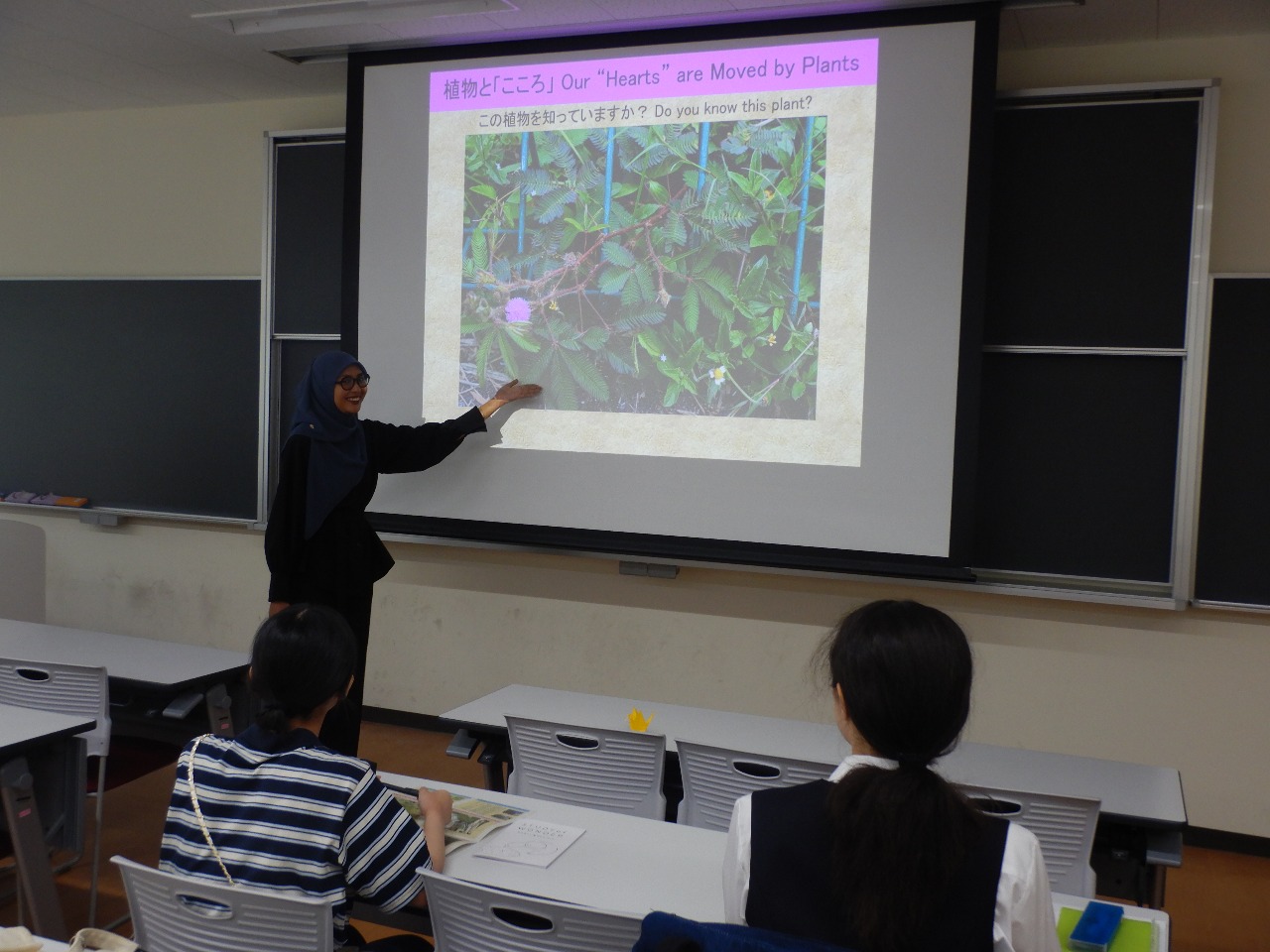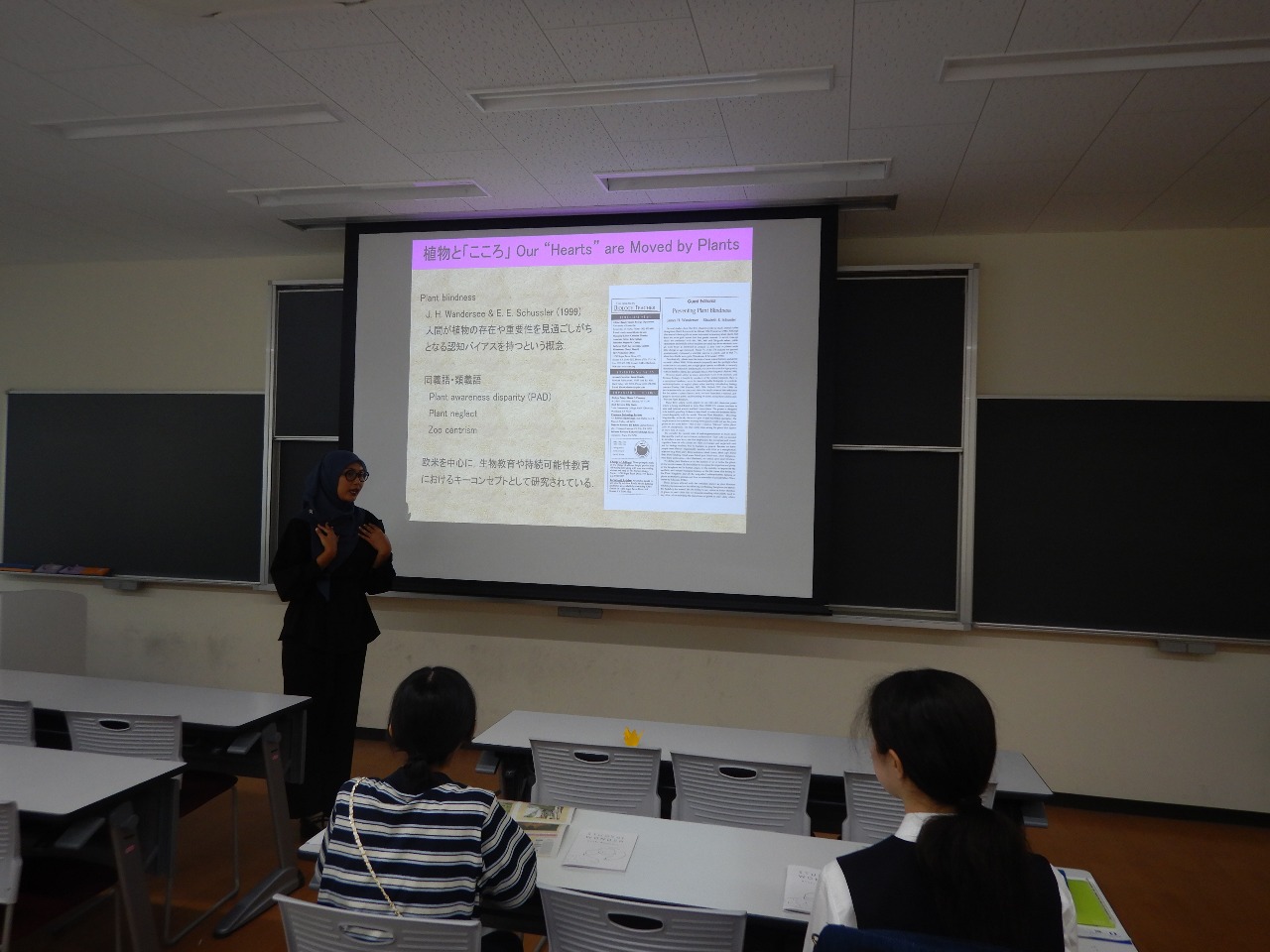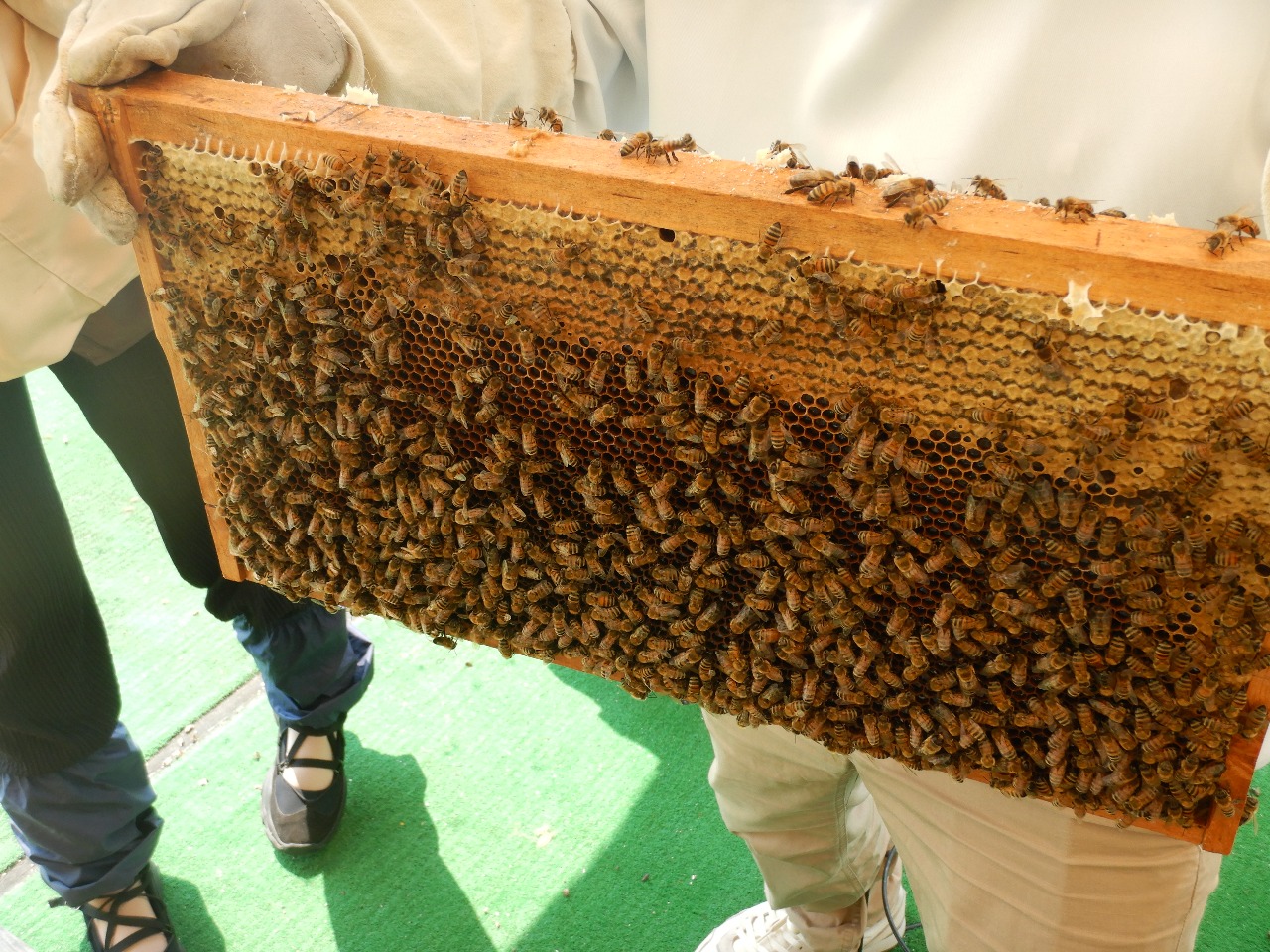News from Okayama: Introduction to Indonesian Native Plants to Visit Honey Lab in Okayama, Japan
As a master’s student from the Biology Education Program at FPMIPA participating in the Double Degree program at Okayama University, Ms. Helwa has the opportunity to engage in various activities. One of them is introducing native plants from Indonesia to high school students in Okayama, Japan, during the Art in School event (May 31, 2025) organized by Okayama University. Through the presentation in this event, the richness and uniqueness of Indonesia’s native plants, such as Rafflesia and jasmine flowers, were introduced to the students and strengthened cross-cultural understanding. In the near future, Ms. Helwa also had the opportunity to join and observe the honey collection process conducted by Okayama Honey Lab (June 1, 2025), one of the urban beekeeping initiatives in Okayama, Japan.
Art in School: Introducing Native Indonesian Plants
The Art in School activities are divided into four parts, each filled with various topics. In this activity, Puan had the opportunity to present several native Indonesian plants in the first section, which consisted of topics on technology, English literature, and botany. This opportunity was utilized to introduce several characteristic plants of Indonesia, namely Putri Malu, Pisang, Rafflesia, and Melati. The background for introducing Putri Malu is to showcase its uniqueness, which includes thigmonasty movement as a response to touch stimuli. In addition, banana plants were also introduced, considering that Japan is a country with four seasons and it is difficult to grow bananas, so students have minimal opportunities to see a banana tree in its entirety. The next plant introduced is Rafflesia arnoldii, which is one of Indonesia’s native plants and the national flower of Indonesia. What is interesting is that the participants of Art in School are already familiar with this plant, which shows that the uniqueness of Rafflesia is well-known among the students. The last plant introduced was the Jasmine Flower, one of Indonesia’s national flowers. The introduction of the Jasmine flower was done by linking it to its use as tea (Jasmine tea).

In addition to introducing native Indonesian plants, on this occasion, Ms. Helwa also introduced Okayama High School students from Japan to the concept of Plant Blindness or Plant Awareness Disparity (PAD). One of the interactive moments in this presentation was showing a picture of a garden landscape and asking the students to point out the living creatures visible in the image. In this case, the students pointed to the grass and birds in the picture as living beings — a quite encouraging result, as it shows an awareness of the existence of plants. However, Ms. Helwa still explained the concept of PAD, which is a tendency for someone to pay less attention to plants compared to animals, possibly due to limited direct experience with nature.

Visit Honey Lab Okayama, Jepang
After successfully introducing native Indonesian plants in the Art in School activity, Ms. Helwa continued her learning experience by visiting the Okayama Honey Lab, an urban beekeeping location situated in the heart of Okayama City. On this occasion, Ms. Helwa had the opportunity to directly observe the routine care performed by the honey lab staff on each bee colony. In this activity, the importance of maintaining hive conditions, rotating honey frames, and observing bee behavior as indicators of colony health was also explained. This activity was a turning point for Mrs. Helwa in understanding the ecosystem, reminding her that there is an interconnection between humans, plants, and the vital role of small creatures like bees in maintaining the chain of life.
If previously Ms. Helwa raised awareness about plants by giving an introductory presentation, then this visit deepens that understanding by observing direct practices in the field. Both become valuable and complementary opportunities to broaden cross-cultural and environmental understanding.
This visit also serves as an opportunity to enrich cross-cultural ecological perspectives — a reflection that both in Indonesia and Japan, which have different ecological conditions, the commitment to preserving and valuing the chain of life can begin by appreciating small things that have a big impact.



